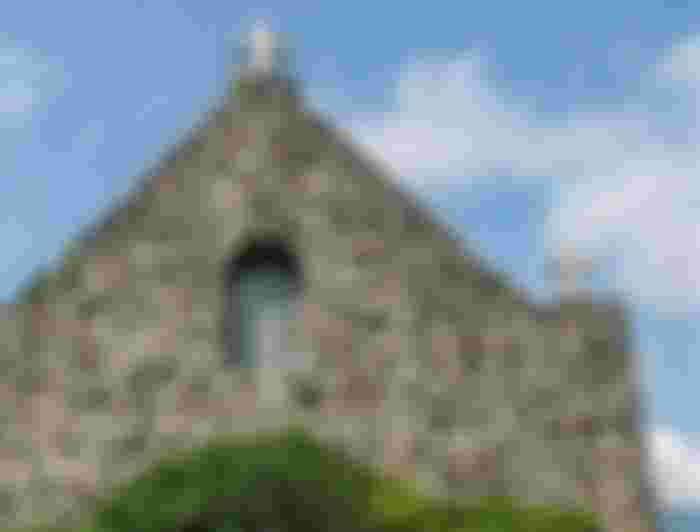
Batanes is on each Filipino's basin list. Furthermore, did I notice it's additionally every picture taker's fantasy objective? With its pleasant slopes and stunning sea shores, nobody needs to ask why.
Situated in the northernmost aspect of the Philippines, Batanes is the nation's littlest territory, both as far as land zone and populace. Heading out to this heaven can cost as much as 18,000 pesos for a ticket to go full circle alone–except if in the event that you exploit carrier promotions.
However, ask those individuals who have been there and they'll disclose to you it's certainly justified regardless of each and every penny. So what's truly uncommon about Batanes that has captivated neighborhood and unfamiliar travelers the same?
Maybe it's the all around flawless landscape, the decent Ivatans, and the mouth-watering treats, for example, uvud (banana tail essence), dibang (flying fish) and the untouched famous coconut crabs. Or then again for history buffs like me, the dazzling authentic tourist spots and characters that have made Batanes considerably more bright.
For those of you who have been tingling to visit this Paradise of the North, here are 9 fascinating realities you should think first about this excellent area and its similarly wonderful individuals.?
List of chapters
The Islands.
Aman Dangat.
Pacita Abad and Fundacion Pacita.
Common Song and Symbols.
The Origin of the Honesty Coffee Shop.
The Oldest Stone House.
Basco Lighthouse and WWII Ruins.
Batanes' WWII Tunnel.
Batanes 'Phantom Barangay.'
1. The Islands.
Batanes is really a gathering of 10 volcanic islands, three of which are occupied, specifically Batan (where the common capital of Basco is found), Itbayat, and Sabtang.
The fourth island, Ivuhos (otherwise called Ibahos), is sometimes possessed by families tending cows. The other uninhabited islands of Batanes are North, Yami, Mavudis, Siayan, Di-nem, and Dequey.
Division of these islands prepared for the development of two particular lingos of the Ivatan language. The individuals who live in the islands of Batan and Sabtang fundamentally speak Ivatan while those in Itbayat talk the Itbayat lingo.
2. Aman Dangat.
Otherwise called "Kenan," Aman Dangat was a datu of Malakdang in Sabtang Island who drove a rebel against Spaniards in 1791.
Aman Dangat was an ardent Ivatan pioneer who kept on administering his kin as per indigenous custom laws even after the Spanish guideline was set up in Batanes on June 26, 1783.
When non-Ivatan Filipinos working under the Spanish government took supplies and wood from his kin without just pay, Aman Dangat dissented, however his men were placed in chains.
Subsequently, he drove over a hundred men from Sabtang to assault their oppressors in 1791, murdering at any rate 7 Spanish government specialists at long last.
In the long run, Aman Dangat and his men were dwarfed by the more grounded Spanish powers. They were sentenced and their resources seized.
Aman Dangat was later executed by hanging in September of 1731. The individuals of Sabtang, then, were ousted in the areas of San Felix and San Vicente in Ivana for the following fifty years (1791-1841).
3. Pacita Abad and Fundacion Pacita.
Pacita Abad is an incredibly famous painter and a guaranteed pride of Batanes.
Conceived in Basco in 1946, Pacita won a BA degree in political theory at the University of the Philippines however was later driven out for America in 1970 because of her political activism against the Marcos tyranny.
She contemplated law in San Francisco however she before long changed gears and began a productive thirty-year vocation as a painter. Her works are portrayed by "lively tone, consistent change, experimentation, and improvement."
As a universally perceived Asian-American craftsman, Pacita had the option to make more than 5,000 fine arts, travel to in excess of 50 nations, worked in 6 landmasses and even paint a 55-meter long scaffold in Singapore before she passed on of malignancy in 2004.
Fundacion Pacita
When her home studio, Fundacion Pacita in Batanes was repaired by Budget Secretary Butch Abad, Pacita's sibling, and is presently the most costly and extravagant lodging in the area.
Albeit expensive, the lodging utilizes some portion of the returns to help youthful Ivatan specialists and legacy preservation extends in Batanes.
4. Commonplace Song and Symbols.
"Kalusan" is authoritatively the common melody of Batanes. It is a paddling tune originally recorded and promoted by Gov. Otto Scheerer in 1909.
By definition, "kalusan" is a working melody sung by Ivatans as they work in the fields, line, or cut wood. This melody is normally begun by a tune chief (vachi) trailed by laborers who might sing the remainder of the tune.
As per enactment passed on November 28, 1988, coming up next are the affirmed common images of Batanes:
Common Tree: Aryus
Common Flower: Rahakut (local white orchid)
Common Bird: Aradiwangan, Voyit (Ivatan dove)
Common Fish: Mayasang
Common Air Plant: Humahum (plant)
5. The Origin of the Honesty Coffee Shop.
As the name recommends, the Honesty Coffee Shop in Ivana began as a straightforward store which served boiling water and espresso to individuals heading out to and from the island of Sabtang. The proprietor, Elena Castaño-Gabilo, a resigned government funded teacher, assembled the principal store in the town with the assistance of her life partner, Jose.
The first store offered espresso, sugar, and boiling water each morning. There was likewise an oven accessible for the individuals who needed to cook rice or warmth water. Mrs. Elena would come right on time to set up these and return just at early afternoon to mind the store.
A tremor in July 2000 constrained the couple to construct another house in Ivana. The first store was shut briefly yet was returned because of diligent public interest and individuals who depicted the store as their "home away from home." At this point, it began to manage the name "Trustworthiness Coffee Shop."
Notwithstanding espresso, the store presently additionally offers youthful coconut, rolls, soda pops, noodles, just as gift items like vakoul, a well known Ivatan headgear.
Mrs. Gabilo got the "Extraordinary Ivatan Award" from the common government because of her "uncommon commitment and altruism in safeguarding the reliable Ivatan estimation of genuineness through her Honesty Store."
6. The Oldest Stone House.
Worked during the Spanish frontier period, Ivatan stone houses endure the absolute most grounded storms and have been viewed as a social fortune of the region.
The most seasoned stone house in Batanes was inherent 1877. Otherwise called the House of Estrella, the "Place of Dakay" was named after its inheritor, Jose "Dakay" Estrella. The structure was initially worked for his auntie, Luisa Estrella, through a Bayanihan (voluntarism) framework privately alluded to as qapañidungan.
Place of Dakay is still in its unique structure, aside from its covered cogon rooftop which is typically supplanted each 25 to 30 years. It has endure different normal catastrophes including a Magnitude 8.3 tremor on September 13, 1918, a debacle that carried the whole town of Ivana to the ground.
7. Basco Lighthouse and WWII Ruins.
One of the most mainstream milestones in the territory, the Basco Lighthouse in Naidi Hills is really one of the three beacons proposed by previous Congressman Florencio Abad.
The beacons (the other two are situated in Sabtang and Mahatao) additionally fill in as vacation spots.
The present-day Basco beacon stands where the primary beacon in the region was constructed. Not very a long way from the beacon are some WWII ruins. These structures were once essential for the American message offices which associated the territory to the focal government.
Implicit 2003, the Basco beacon towers at around 66 ft. furthermore, was made with stone or rubble brick work.
8. Batanes' WWII Tunnel.
Access to a Japanese passage in Batan Island. Photograph graciousness of Luisito Batongbakal Jr.
Otherwise called the Dipnaysupuan Japanese passages, the Batanes burrows in Batan island were worked as a major aspect of the Japanese powers' military fortress. During World War II, neighborhood Ivatans–including youngsters were requested by the Japanese officers to manufacture the passages.
In an I-Witness narrative, survivors Lolo Daniel and Lolo Luis related how they fabricated the passages which are furnished with five entryways. Despite the fact that they were not tormented while burrowing, the dread of being executed constrained them to work proficiently.
As of this composition, no authority authentic or geographical investigation has been directed at this point, despite the fact that the nearby government is pursuing saving the passages and shielding them from pillagers.
9. Batanes 'Ghost Barangay.'
Found 23 kilometers from Basco, Sitio Song is an abandoned spot, one that could qualify as a 'phantom barangay'.
The stone houses in Song were relinquished during the 1950s when a tsunami hit the island of Batan. What has been left is a bunch of roofless shells of old stone houses.
